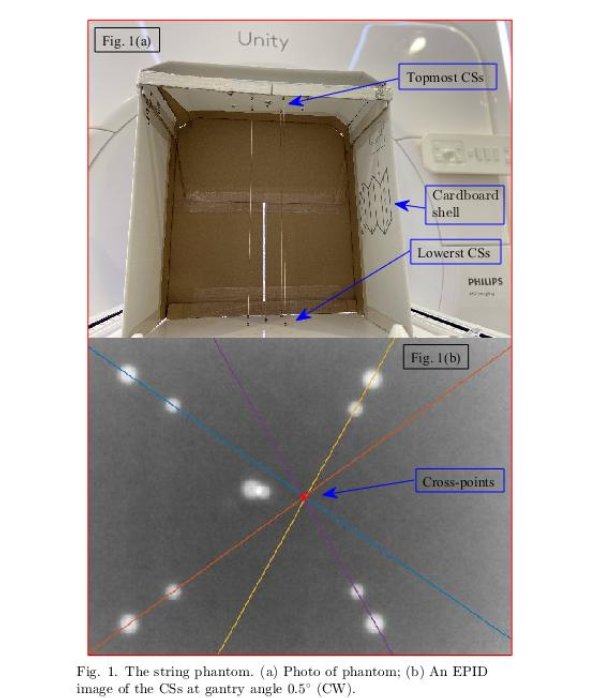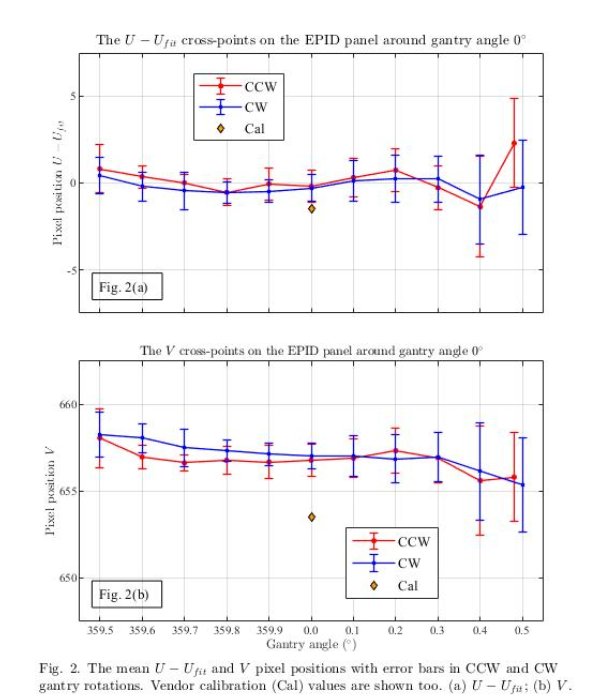Validation of EPID reference pixel for MLC and jaw calibration on a high-field MR linear accelerator
Hans Lynggaard Riis,
Denmark
PD-0891
Abstract
Validation of EPID reference pixel for MLC and jaw calibration on a high-field MR linear accelerator
Authors: Hans Lynggaard Riis1,5, Adriaan Fietje2, Anders Smedegaard Bertelsen3, Uffe Bernchou4,6, Carsten Brink1,6, Benny Clifford Buthler1
1Odense University Hospital, Department of Oncology, Odense, Denmark; 2Elekta Instrument AB, Costumer Service, Stockholm, Sweden; 3Odense University Hospital , Department of Oncology, Odense, Denmark; 4Odense University Hospital, Oncology, Odense, Denmark; 5University of Southern Denmark, Department of Clinical Research, Odense , Denmark; 6University of Southern Denmark, Department of Clinical Research, Odense, Denmark
Show Affiliations
Hide Affiliations
Material and Methods
Copper spheres
(CSs), Æ4 mm, were
pairwise placed vertically above each other. The CSs had a hole drilled
centrally (Æ0.8 mm)
such that they could be placed on a sewing thread, approximately 40 cm apart.
The thread was passed through the hole and glued to fasten the position of the CS.
Five strings, each with two CSs, were placed in a box to prevent the impact of
air circulation. One line was placed close to the expected central beam, and
the four others placed in the corners of a 6×6 cm square surrounding the centre
string, Fig. 1(a). For varying gantry angles (±1º in step 0.1º), the CSs were irradiated
with 20 MU while acquiring EPID images in both clockwise (CW) and
counter-clockwise rotation (CCW). The projection of each pair of CS on the EPID
will be on a line passing through the point of vertical beam direction, which
for zero gantry position will be the zero position of the EPID. A MATLAB code
was used to analyse the images for CS positions and perform cross-point calculations,
Fig. 1(b).
Results
The
crossing point across and along the bore (U,
V) on the EPID represents the vertical fan-line of the radiation beam at
the actual gantry angle, Fig. 2. As expected, the crossing point in the
direction across the bore (U) had a linear
variation with gantry rotations Ufit
=af+b, with a=114.8/º, b=510.5, and f being the
gantry angle in degrees. Thus, the U
cross point is sensitive to the definition of the zero gantry angle. The
standard deviation of the crossing point of the four lines was approximately 1.3
(U) and 1.4 (V) pixels. The vendor calibration (Cal) is also shown in Fig. 2. A
slight discrepancy between Cal and string phantom of 1.2 pixels (0.3 mm in
iso-plane) and 3.4 pixels (0.7 mm in iso-plane) was observed in the U and V direction, respectively. The effect of CW and CCW rotations seems
negligible.
Conclusion
A simple phantom able to detect the centre
EPID position was developed. Only small differences between vendor calibration
and phantom measurements were observed. The measured U direction depends on a correct definition of the zero position of
the gantry. That uncertainty can be removed by using a single CS on the centre
string in a Winston-Lutz test
that can define the U position.
However, only the string phantom can detect the EPID centre position in the
longitudinal direction (V). Furthermore,
the string phantom does not need precise alignment to correct measurements,
making it easy and fast to use.